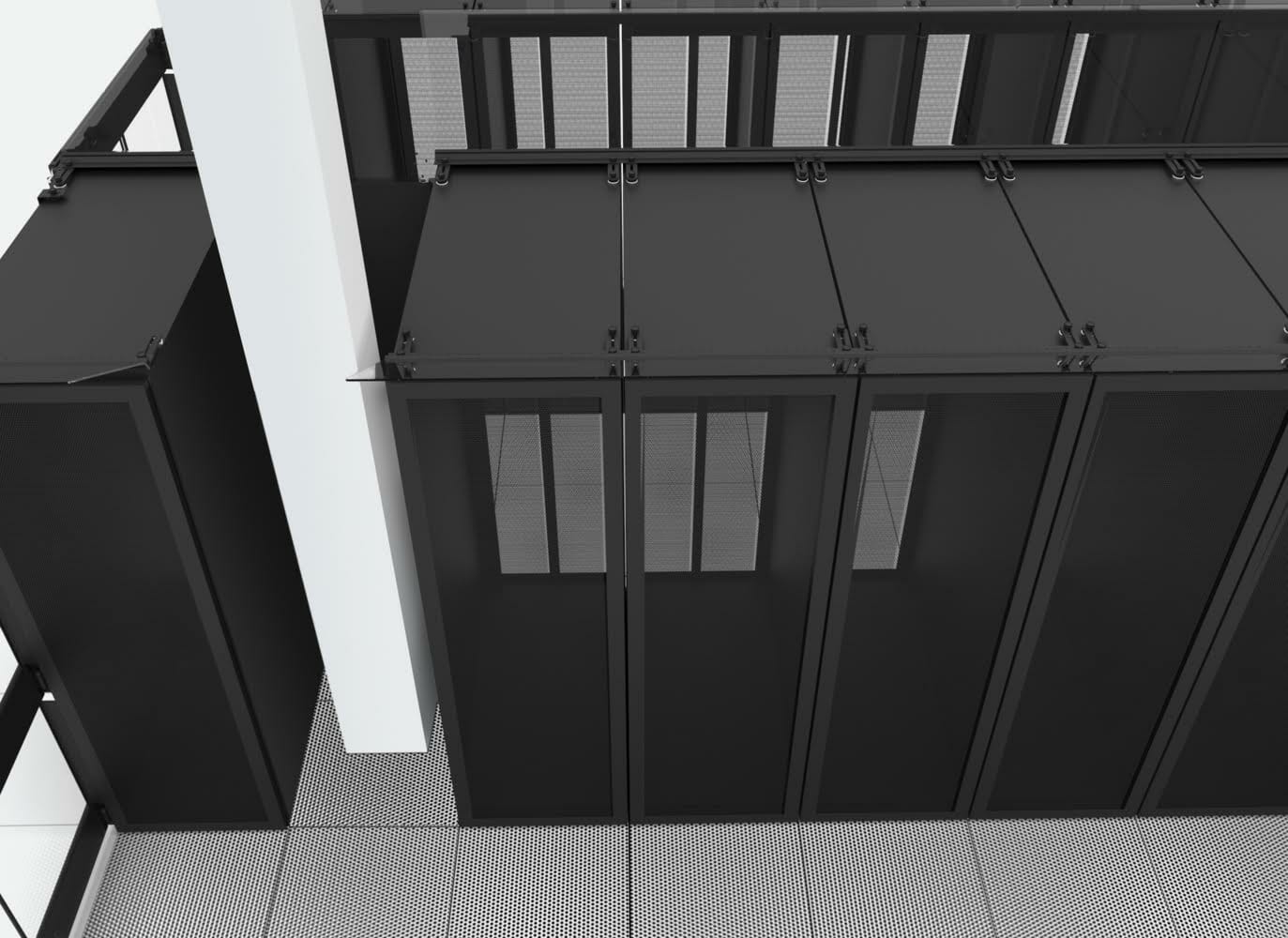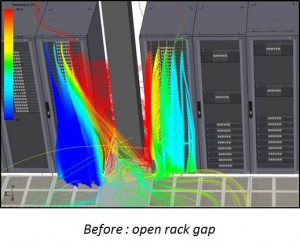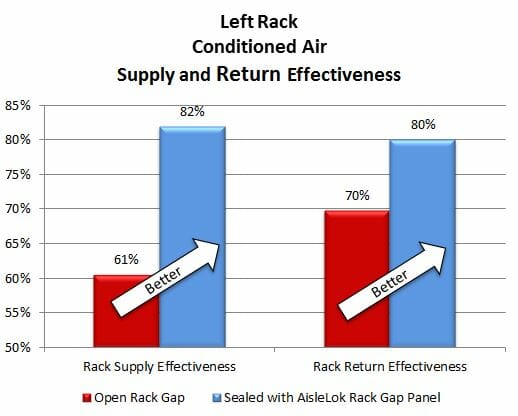Rack Gaps: The Commonly Overlooked Holes in the Data Center13 min read

First and foremost, to clarify what we are talking about when we say “rack gaps”, we are referring to the openings, or space, between data center equipment racks. Not to be confused with gaps within the rack or cabinet, such as gaps between the mounting rails and sides of cabinets. Rack gaps are typically much larger and more noticeable. Ironically, these gaps are commonly overlooked or even ignored, even while efforts are made to seal much smaller openings. Rack gaps, if not addressed, dramatically compromise the optimization of data center cooling.
In last week’s blog post, we talked about the importance of sealing openings within the rack and the proper way of doing so, such as installing blanking panels in all open U spaces for example. While many companies make a valid effort to seal openings within the rack, it is surprising how many companies overlook these giant “holes” right in between two cabinets that they successfully installed blanking panels. These rack gaps can be found in many different areas around the computer room and come in various different sizes depending on the location and reason for the gap.
Reasons why rack gaps can occur
Rack gaps will generally occur because of one of the following reasons:
1. Column in the row. Often, when building out a row, structural building columns prevent the placement of a cabinet. This often leaves two gaps in the row of varying sizes, one on either side of the column.
2. Removing cabinets from row. When a cabinet is old, damaged or needs to be replaced for another reason, it will be removed from the row. If the cabinet is being replaced immediately, this does not present a problem, however the cabinet is not always replaced in a timely matter, if replaced at all.
3. Building out a row. Although this is the least common, when building out a row, occasionally gaps will be left between the racks, whether to add a cabinet later, make room for other equipment/hardware, or for some other reason.
Why you need to seal them
Sealing the gaps between racks is extremely important for two reasons, as both of these conditions results in higher operating expenses wasted cooling capacity, as well as limited efficiency.
Reason 1: Exhaust air can flow into the cold aisle. Exhaust air circulation into the cold aisle increases intake temperatures to IT equipment, which reduces your equipment’s reliability. This effect of exhaust air mixing with supply air and increasing intake temperatures (common to most data centers) requires more cooling units to be running or fan speeds to be higher than would otherwise be necessary. It also necessitates lower cooling unit temperature set points to overcome the mixing and keep your IT equipment intake air temperature within desired limits.
CFD analysis clearly shows how the rack gap allows for a large amount of exhaust air to recirculate. Airflow marked in red is outside of ASHRA
E’s recommended input temperature range.
Installing the AisleLok® Adjustable Rack Gap Panel dropped the maximum IT inlet temperature for the rack to the left of the column from 87.5°F to 76°F.
Reason 2: Large volume of conditioned air can be lost. Similar to exhaust air entering the cold aisle, the loss of conditioned supply air requires more cooling units to be running or higher fan speeds to overcome the loss of conditioned airflow volume.
Additionally, the rack supply effectiveness suffers. This is the percentage of air entering the rack directly from a cooling unit, without mixing with hot air first (a higher percentage is better). Rack return effectiveness also drops, which is the percentage of hot exhaust air leaving the rack that travels directly back to a cooling unit without first mixing with cold supply air (a higher percentage is better).
In our CFD analysis, we closely examined the left rack (as seen in above CFD image) and quantified the impact that sealing rack gaps has on these two metrics. As you can see, sealing the gap greatly increases both the rack supply effectiveness, as well as the rack return effectiveness.
Conclusion
When implementing an airflow management strategy, the goal is always the same, to improve the intake air temperatures to IT equipment. More specifically, to reduce the highest intake air temperatures so that all intake temperatures are as low and even as possible. This, in return, enables changing the control of cooling infrastructure to improve efficiency and increase capacity. While many people make an effort to seal openings within the rack, such as gaps between the mounting rails and sides of cabinets, gaps between the racks are commonly overlooked. These “rack gaps” are generally much larger openings and can dramatically compromise your data center cooling if they are not properly addressed.



Nice article. Thank you for sharing.
There is a common perception that containment solves all your data hall airflow problems, however it is only effective when it successfully meets its objective of separating hot and cold air streams…rack gaps are one example of poor segregation. In our experience, you still often find significant differences in server supply temperature when this is measured in contained systems – operator awareness helps ensure effective implementation.
Hello Sophia, yes I also see people thinking one form of containment or another will solve all their problems, when it doesn’t. One of the problems is that people are not taking a detailed enough look at server intake temperatures, so they are missing problems. The other major opportunity is for people to do the math to determine if problems are due to a lack of capacity or a lack of management of the cooling capacity. Also doing the math will identify if an effectively cooled computer room can be made more efficient. Thanks, Lars